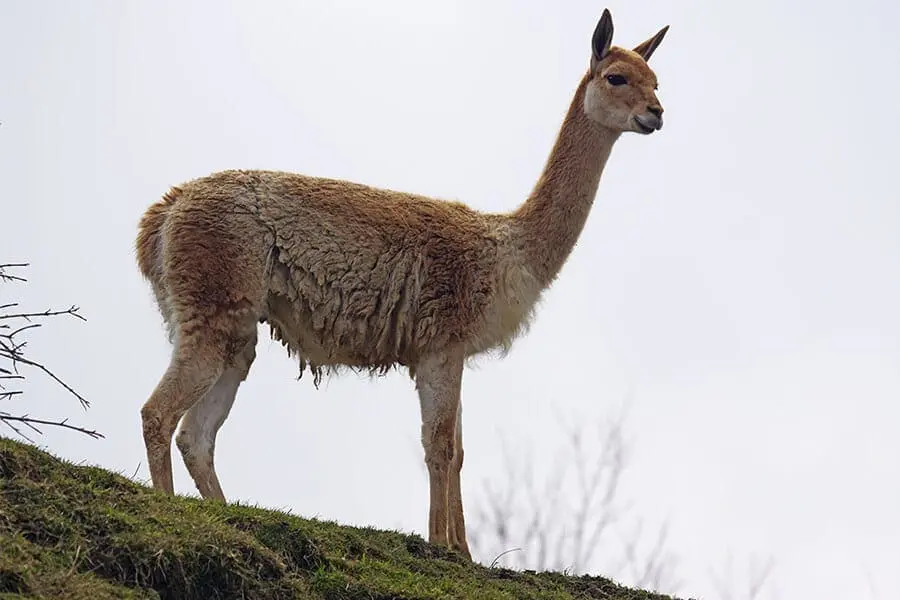

The vicuna is still around in the Andean Mountains of South America.
Our three alpacas in the Paws On Petting Zone have become guest favorites over the years, luring visitors in with their endearing underbites and soft coats. But do you know where these animals originated? And what makes them different from llamas? The history of alpacas is rich, and sure to shed some light on these important questions.
Alpacas are members of the camelid family, which also includes llamas, guanacos, vicunas and the Bactrian and dromedary camels. This family originated on the North American plains more than 40 million years ago. Ancestors of the South American camelids migrated to the continent during the Great American Interchange, and two wild species—vicunas and guanacos—emerged and still live in the Andes today.
Genetic analysis suggests that, around 6,000 years ago, alpacas appeared through selective breeding of the vicuna for its fine wool. This wool became a staple in the domestic textile market and was used to produced clothing that was a sign of social status. The llama was domesticated from the guanaco for similar reasons.
In Inca civilization, robes made of alpaca or vicuna fleece were reserved for royalty. Many Andean people even used cloth from this fleece as currency. These animals remain internationally popular for their luxury fiber and are also used as pets or show animals in some countries.
Alpacas can now be seen in over 20 different shades and have two recognized breeds: Huacaya and Suri. Huacaya alpacas are more common and have dense, springy fleece on most of their body, while Suri alpacas have long, silky fibers that hang along their sides. Today, there are over three million alpacas in the Andean highlands and around 20,000 in North America.